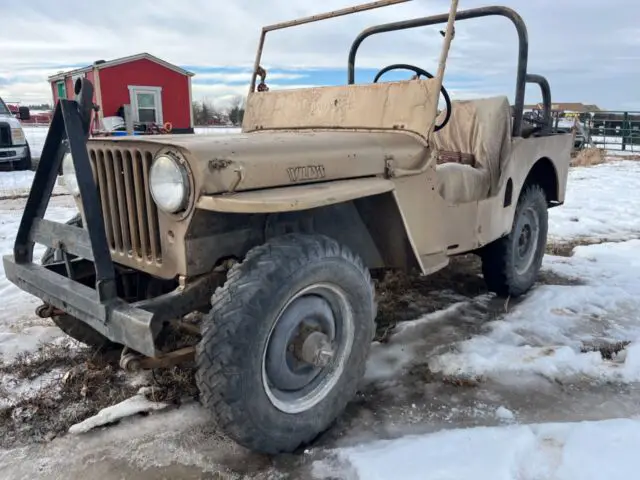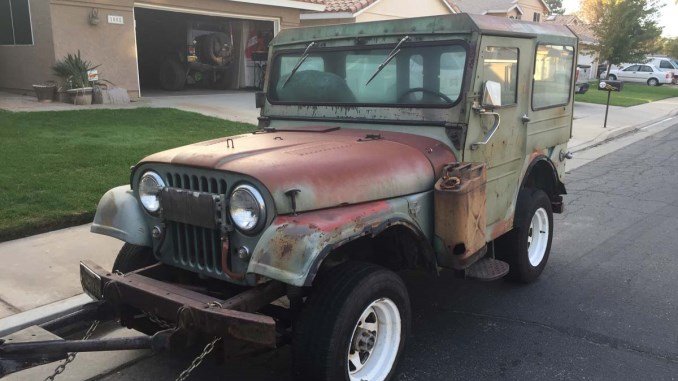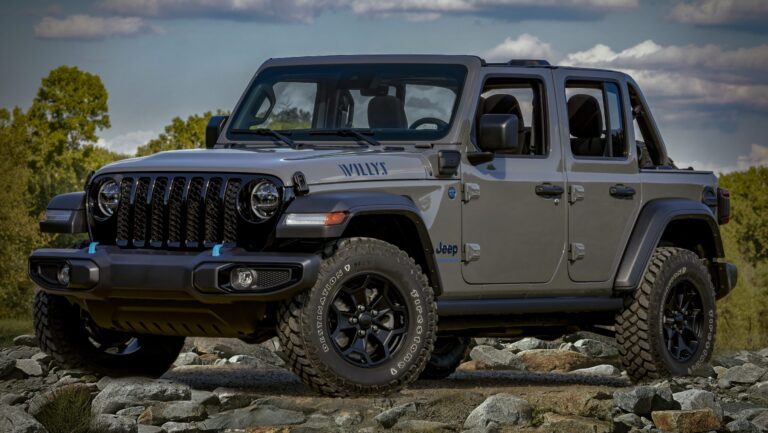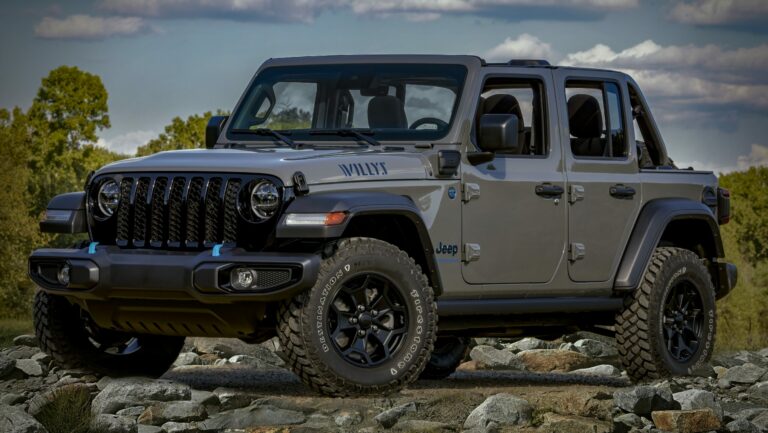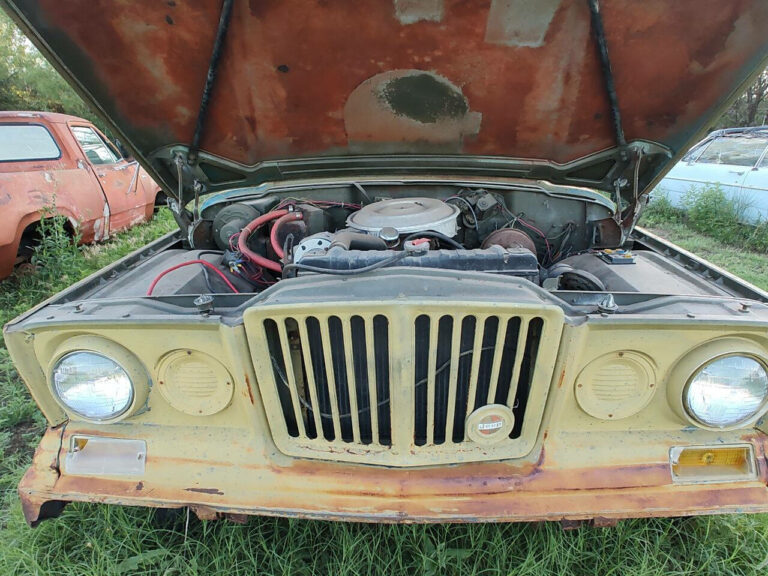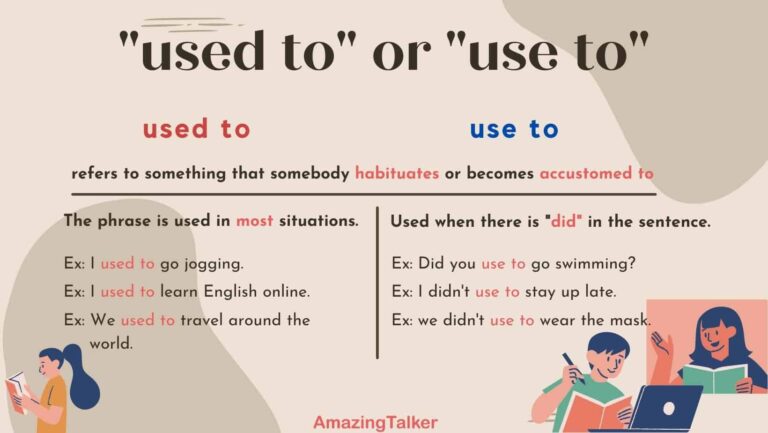Willys Jeep Project For Sale: Embarking on a Restoration Journey
Willys Jeep Project For Sale: Embarking on a Restoration Journey jeeps.truckstrend.com
The Lure of the Unfinished Legend
The phrase "Willys Jeep Project For Sale" conjures images not of a pristine, showroom-ready vehicle, but of a diamond in the rough—a historical artifact awaiting resurrection. For enthusiasts, mechanics, and history buffs alike, a Willys Jeep project represents more than just a vehicle; it’s a blank canvas, a mechanical puzzle, and a tangible link to a pivotal era in automotive history. These iconic machines, born from the crucible of World War II and later adapted for civilian life, embody rugged simplicity, unparalleled utility, and an enduring spirit of adventure.
Willys Jeep Project For Sale: Embarking on a Restoration Journey
Acquiring a Willys Jeep project for sale is an invitation to embark on a deeply rewarding journey. It’s a commitment to learning, problem-solving, and ultimately, to bringing a piece of American ingenuity back to life. Whether your goal is a meticulous, historically accurate restoration, a rugged off-road beast, or a charming daily driver with vintage appeal, the path begins with that initial "project" acquisition. This comprehensive guide will delve into every aspect of finding, evaluating, and embarking on your own Willys Jeep restoration adventure.
What Exactly is a Willys Jeep Project?
When you encounter a "Willys Jeep Project For Sale," you’re typically looking at a vehicle that is far from roadworthy. These are non-running, partially disassembled, or highly corroded examples of Willys MBs, GPWs, CJ-2As, CJ-3As, CJ-3Bs, M38s, or even the less common Willys Wagons and Trucks. The "project" designation signifies that significant time, money, and skill will be required to bring it back to a functional, presentable state.
The condition of a Willys Jeep project can vary wildly:
- Bare Frame & Body: Sometimes just the frame, axles, and a rusted body tub are all that remain, often in multiple pieces.
- "Basket Case": A vehicle that has been partially or fully disassembled, with parts stored (or scattered) in boxes. This requires meticulous organization and identification.
- Non-Running but Complete: The vehicle is largely intact but doesn’t start or run due to mechanical issues, seized engine, or neglected systems.
- Running Project: It might start and move under its own power, but requires extensive work on brakes, steering, suspension, and body to be safe and reliable.

Common issues include severe rust (especially in floor pans, toolboxes, and frame hat channels), seized engines and transmissions, crumbling wiring, worn-out suspension components, and missing original parts. Understanding these potential challenges upfront is crucial for anyone considering a Willys Jeep project for sale.
Why Buy a Willys Jeep Project? The Benefits and Rewards
The decision to buy a Willys Jeep project for sale is often driven by passion rather than pure practicality, but the rewards are substantial:
- Cost-Effectiveness (Initial): The primary allure is a lower entry price compared to a fully restored Willys. While restoration costs can add up, the initial outlay is significantly less, making it accessible to more enthusiasts.
- Unparalleled Customization Potential: A project allows you to build the vehicle exactly to your specifications. You can opt for a historically accurate nut-and-bolt restoration, a reliable restomod with modern components, or a purpose-built off-road machine. Every decision is yours.
- Invaluable Learning Experience: Restoring a Willys is a hands-on masterclass in mechanics, fabrication, welding, electrical systems, and problem-solving. You’ll gain skills and knowledge that transcend automotive repair.
- Historical Preservation: You become a custodian of history. By restoring a Willys, you’re not just fixing a car; you’re preserving a piece of the past, ensuring its legacy continues for future generations.
- Immense Personal Satisfaction: There’s a unique pride that comes from transforming a rusted hulk into a running, driving piece of art. Every bolt tightened, every piece fabricated, every problem solved contributes to a profound sense of accomplishment.
- Community Connection: The Willys Jeep community is vibrant and supportive. You’ll find forums, clubs, and events filled with knowledgeable individuals eager to share advice, parts, and camaraderie.
- Potential Investment: While the primary motivation shouldn’t be profit, a well-restored Willys Jeep, especially an MB or GPW, can appreciate in value, making your efforts a worthwhile long-term investment.
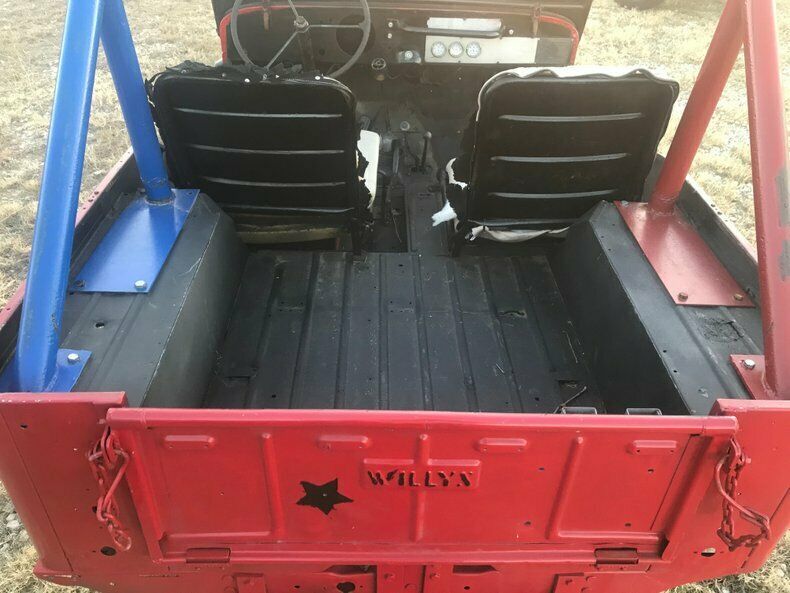
Key Considerations Before Diving In
Before you commit to a Willys Jeep project for sale, a thorough self-assessment and realistic planning are essential:
- Budget Beyond Purchase Price: The purchase price is just the beginning. Factor in costs for sandblasting, bodywork, paint, engine/transmission rebuilds, new wiring, brakes, tires, upholstery, and countless small parts. Set aside a contingency fund (at least 20-30% of your estimated total).
- Skills & Time Commitment: Do you possess the necessary mechanical, welding, fabrication, and electrical skills? If not, are you willing to learn, or do you have access to skilled professionals? Be honest about the time you can dedicate; a full restoration can take hundreds, if not thousands, of hours over several years.
- Workspace: Do you have a dedicated, secure, and sufficiently large space (a garage, workshop, or barn) where you can store the vehicle and work on it comfortably, potentially for an extended period?
- Parts Availability: For common models like the MB, GPW, and CJ-2A/3A, parts availability is surprisingly good, with many reproduction parts available. However, some rarer components or specific model variations can be challenging to source. Research parts suppliers before you buy.
- Documentation & This is critical. Ensure the vehicle comes with a clear title or proper documentation for registration in your state/country. Verify that the VIN plate matches the frame numbers (if present) and the title. Without proper paperwork, your restored Willys might be legally unusable.
- Define Your Goal: What do you want the finished Willys to be? A concourse-level restoration, a reliable driver, or a modified off-roader? Your goal will dictate the level of effort, cost, and types of parts you’ll need.
The Buying Process: A Step-by-Step Guide
Finding and acquiring a Willys Jeep project for sale requires patience and diligence:
- Research & Education: Before looking, understand the different Willys models (MB, GPW, CJ-2A, etc.), their unique characteristics, and common rust areas or mechanical issues. Familiarize yourself with fair market values for projects in various conditions.
- Finding Projects:
- Online Marketplaces: eBay, Craigslist, Facebook Marketplace, dedicated classic car sites (e.g., Hemmings, Bring a Trailer).
- Specialized Forums & Clubs: Willys/Jeep forums (e.g., G503.com for military Jeeps, eWillys.com for CJs) often have classified sections.
- Local Classifieds & Word-of-Mouth: Check local papers, bulletin boards, and spread the word among classic car enthusiasts.
- Auction Houses & Estate Sales: Occasionally, projects turn up here.
- Thorough Inspection (CRUCIAL!): Never buy sight unseen. If possible, inspect the vehicle in person. Bring a flashlight, a magnet (to check for bondo), and perhaps a knowledgeable friend.
- Frame: The backbone of the vehicle. Look for rust, cracks, bends, or previous amateur repairs. A severely compromised frame can be a deal-breaker or require extensive professional work.
- Body Tub: Check for rust in floor pans, hat channels (underneath), toolboxes, and fenders. Look for signs of accident damage or previous poor repairs.
- Drivetrain: Inspect the engine, transmission, transfer case, and axles. Are they seized? Are parts missing? Look for obvious cracks or severe damage.
- Completeness: Inventory what’s present and what’s missing. Missing major components (engine, transmission, axles) significantly increase restoration cost and time.
- Documentation: Verify the VIN plate (if present) and ensure the seller has a clear, transferable title.
- Negotiation: Based on your inspection, completeness, and market research, negotiate a fair price. Highlight any significant issues you’ve identified.
- Transport: Plan how you’ll transport the project home. It will likely require a flatbed trailer or professional towing service.
- Post-Purchase Checklist: Once home, secure the vehicle in a dry, safe location. Take a detailed inventory of all parts. Photograph everything as it is. Begin the process of cleaning, organizing, and planning your restoration steps.
Types of Willys Jeep Projects & What to Look For
Different Willys models present unique project opportunities and challenges:
- Military Willys (MB/GPW, M38/M38A1): These are highly sought after for their historical significance. Restoring them often focuses on authenticity, requiring specific military-spec parts. Look for original data plates, correct frame numbers, and military features. M38s and M38A1s are slightly larger and have 24V electrical systems.
- Civilian Willys (CJ-2A, CJ-3A, CJ-3B, CJ-5): The "Civilian Jeeps" are arguably more common as projects. They offer more flexibility for customization, as strict historical accuracy isn’t always the primary goal. CJ-2As are popular for their classic flat-fender look. CJ-3Bs have a distinctive "high-hood" to accommodate the F-head engine. CJ-5s are more modern but still offer classic Jeep appeal.
- Willys Wagons & Trucks: These larger vehicles offer more utility and unique styling but can be harder to find parts for, especially body panels. They make excellent candidates for restomods with modern powertrains.
- "Barn Finds": Often complete, but neglected for decades. They might have less rust than outdoor projects but will require full mechanical overhauls and extensive cleaning.
- "Basket Cases": These are projects where the vehicle is already disassembled. While intimidating, they can sometimes be cheaper and allow for easier inspection of individual components once you get them organized.
- "Running Projects": These can be good starting points, as you can verify engine/drivetrain function. However, don’t underestimate the amount of work still needed on safety-critical systems like brakes, steering, and suspension.
Overcoming Challenges and Tips for Success
Restoring a Willys Jeep project is not without its hurdles, but careful planning and a resilient spirit will see you through:
- Tackling Rust: Rust is the arch-nemesis. Invest in proper rust removal (sandblasting, media blasting), cut out severely rusted sections, and weld in new metal. Reproduction body panels and repair sections are widely available. Use rust-inhibiting primers.
- Sourcing Missing Parts: Online suppliers (e.g., Kaiser Willys, Walck’s 4×4, Army Jeep Parts) are invaluable. Attend swap meets, join online forums (G503.com is a treasure trove for military Willys), and network with other enthusiasts. Don’t be afraid to fabricate simple brackets or components if you have the skills.
- Mechanical Overhaul: Assume the engine, transmission, and axles will need rebuilding. Take your time, consult service manuals, and label everything. Don’t skimp on critical components like brakes and steering.
- Electrical Gremlins: Old wiring harnesses are often brittle and unreliable. Consider replacing the entire harness with a new reproduction unit. Invest in a good wiring diagram and take photos before disassembly.
- Staying Motivated: Restoration is a marathon. Set small, achievable goals (e.g., "this month I’ll finish the frame painting," or "this week I’ll rebuild the carb"). Document your progress with photos and videos. Share your journey with the Willys community for encouragement and advice.
- Patience is Key: Rushing leads to mistakes and frustration. Enjoy the process, learn from challenges, and celebrate every small victory.
Willys Jeep Project For Sale – Estimated Price Ranges
The price of a Willys Jeep project for sale varies dramatically based on its condition, completeness, model year, and location. This table provides a general guide:
| Condition/Description | Typical Missing Items | Estimated Price Range (USD) | Restoration Effort |
|---|---|---|---|
| Bare Frame & Body | Engine, transmission, axles, steering, electrical, interior | $500 – $2,500 | Extreme (Ground-up rebuild, extensive fabrication) |
| "Basket Case" | Fasteners, small brackets, minor interior pieces; may have seized engine/trans. | $1,500 – $4,000 | Very High (Meticulous organization, full rebuild) |
| Non-Running but Complete | Minor mechanical parts, electrical components, cosmetic items; seized engine likely. | $2,500 – $6,000 | High (Full mechanical overhaul, bodywork, paint) |
| "Running Project" | Brakes, steering components, tires, minor electrical, body rust. | $4,000 – $8,000 | Medium-High (Safety systems, significant bodywork) |
| Partially Restored Project | Varies widely; often needs finishing touches, engine rebuild, or specific component work. | $6,000 – $15,000+ | Varies (Can be minor to substantial depending on stage) |
Note: These are rough estimates and can fluctuate based on market demand, historical significance (e.g., early MBs can fetch more), and seller urgency. A Willys Wagon or Truck project might be on the higher end of these ranges for similar conditions.
Conclusion: Your Willys Journey Awaits
A Willys Jeep project for sale is more than just an old vehicle; it’s a gateway to a rewarding hobby, a connection to history, and a testament to American engineering. While the path to restoration demands dedication, skill, and financial investment, the satisfaction of transforming a forgotten relic into a functional, beautiful machine is unparalleled. It’s a journey that builds character, teaches invaluable skills, and ultimately culminates in the unique joy of driving a piece of history that you personally brought back to life. So, if the lure of the unfinished legend calls to you, embrace the challenge, prepare for the adventure, and begin your Willys journey today.
Frequently Asked Questions (FAQ) about Willys Jeep Projects
Q: How much does it cost to restore a Willys Jeep from a project state?
A: This varies wildly. For a full, high-quality restoration, expect to spend anywhere from $15,000 to $40,000+, depending on the initial condition of the project, whether you do the work yourself, and the level of authenticity desired. A basic "driver" restoration might be achievable for less.
Q: Where can I find parts for my Willys Jeep project?
A: Several specialized vendors (e.g., Kaiser Willys, Walck’s 4×4, Army Jeep Parts, Omix-ADA) offer a wide range of reproduction and NOS (New Old Stock) parts. Online forums and swap meets are also excellent sources for used or hard-to-find components.
Q: Do I need special tools to restore a Willys Jeep?
A: While many tasks can be done with standard hand tools, having access to a good welder, grinder, air compressor, impact wrench, and engine hoist will significantly help. Specialized tools for specific tasks (e.g., bearing presses) might be needed, or you can outsource those jobs.
Q: How long does a Willys Jeep restoration typically take?
A: For a dedicated amateur working in their spare time, a full frame-off restoration can take anywhere from 2 to 5 years, or even longer. Professional restorations can be completed in 6-18 months but come with a significantly higher labor cost.
Q: Can I daily drive a restored Willys Jeep?
A: While possible, it’s generally not recommended for modern traffic due to lack of safety features (airbags, crumple zones), slow speeds, and limited comfort. Most restored Willys Jeeps are used for leisure, parades, or light off-roading. However, "restomod" builds with modern engines and brakes can be more suitable for regular driving.
Q: What’s the most important thing to check when buying a Willys Jeep project for sale?
A: The condition of the frame and the presence of a clear, transferable title. A severely rusted or bent frame can be extremely costly to repair, potentially making the project unfeasible. Without a proper title, you might not be able to legally register the vehicle.
Q: Is restoring a Willys Jeep a good investment?
A: If done correctly and to a high standard, a restored Willys Jeep can appreciate in value, especially rarer or historically significant models like the MB/GPW. However, the true "return on investment" often comes from the personal satisfaction, the learning experience, and the joy of owning and driving a piece of history, rather than purely financial gains.
